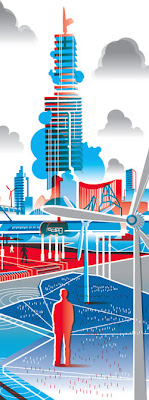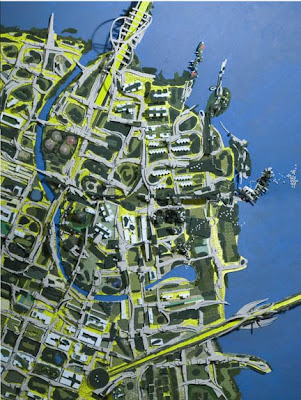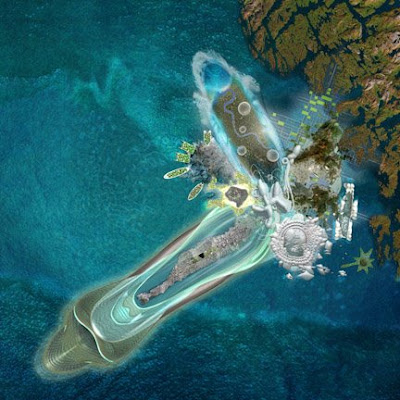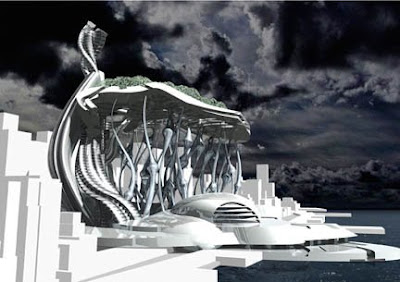ArchNewsNow tipped me off to an article by Mitchell Joachim, visionary architect and educator – as well as partner in the non-profit Terreform 1 – a firm whose work has been referenced on L+U previously. The link to a short article on Wired was interesting, and worth reading. As one of the 2008 Smart List, which are billed as one of the 15 People the Next President Should Listen To… Joachim specifically is singled out in terms of Redesigning Cities from Scratch.

:: A face you can trust? – image via Wired
Joachim, who did stints with Michael Sorkin, as well as some high-profile design firms, now, in addition to Terreform 1, teaches at Columbia, where Wired dubs him a ‘…A kind of Frederick Law Olmsted for the 21st century, he spends most of his time thinking about how to reduce the ecological footprint of cities.” Well sorta, but that’s some big shoes to fill.
Anyway, who knows what young FLO would be up to if he lived in our age and time – and Joachim definitely has some great ideas and credentials. And FLO didn’t have to dealt with cities and automobiles as much – and would probably be railing against the car as a blight to urban living and public health, similar to Joachim (via Wired): “For nearly a century, Joachim says, “cities have been designed around cars. Why not design a car around a city?” So he did just that. One of his concept vehicles, the City Car , was named to Time magazine’s Inventions of the Year list in 2007.”

:: City Car – image via Time
This imaginative reconfiguring of cites includes major moves to solve major problems. While mostly theoretical, the ideas have a ring of plausibility if there were, say – a political will to incorporate them. One such example: “…reinventing the city doesn’t stop at the curb; he’s been reimagining just about every part of the modern urban landscape. To help cool Atlanta, Joachim suggests flooding an area of the city now filled with parking lots to create a “munificent pool”–a large pond filled with fish, plants, and algae, surrounded by trees. It would counteract the urban “heat island” effect and process gray water and sewage. The waterworks would be powered by wind turbines.”

:: Atlanta of the Future? – image via Wired
As mentioned, his work blends into the vegetated architecture realms at times, and the Terreform 1 work with Sorkin definitely has a verdant tinge to it, such as one of my favorites, the Fab Tree Hab. Mentioned in the article: “Rather than cutting down a tree and transporting it from forest to mill to lumber-yard to building site, the house is the tree. It’s the ancient art of “pleaching”–training and joining plants to create structures–with a 21st-century twist, using milling software to achieve precise geometries.”

:: images via The Brink Tank
Another reference to a WALL-E-esque garbage urbanism, and you get the point. This carries into a number of works – all very cool proposals and visions for urban areas – including some amazing work and graphic representation techniques. A sample of the veg.itectural (and read more about them at the Terreform 1 site):

:: New York 2106 – image via Terreform 1

:: Future North – image via Terreform 1

:: Green Brain – image via Terreform 1

:: Peristaltic City – image via Terreform 1
So sure, the next president should definitely listen to Mr. Joachim, as well as other innovative thought leaders. Listening is good – and depending on whom gets elected, said listening actually has the potential to be heard, and translated into forward-thinking policy and action. I’m guessing in our currently political/financial state – even if there is a dialogue at world-changing levels – action is still a ways off. A step in the right direction though.

That City Car has to be one of the coolest things I’ve seen all year.
But those “green brain” things look a little too much like those things out of War of the Worlds. Scary….
Yeah, when we were doing Integrating Habitats – one of our team members found that – as we looked for ways to reduce the area for parking – and thought the fold up car would reduce SF a bit. Also we were looking how to provide transport for materials, so thought these could be a small-footprint ‘fleet’ of small trucks to carry home materials – allowing people to shop via bike or transit.
I never thought of War of the Worlds. There was a competition about post-disaster housing for either New Orleans or NYC – which has some aerial housing via tethered floating zepplins – which is an interesting solution…
great comments and post.
But spell the name; “Joachim”
Thanks for pointing out that error… at least I’m completely and consistently wrong for the whole post 🙂 Should be fixed now.